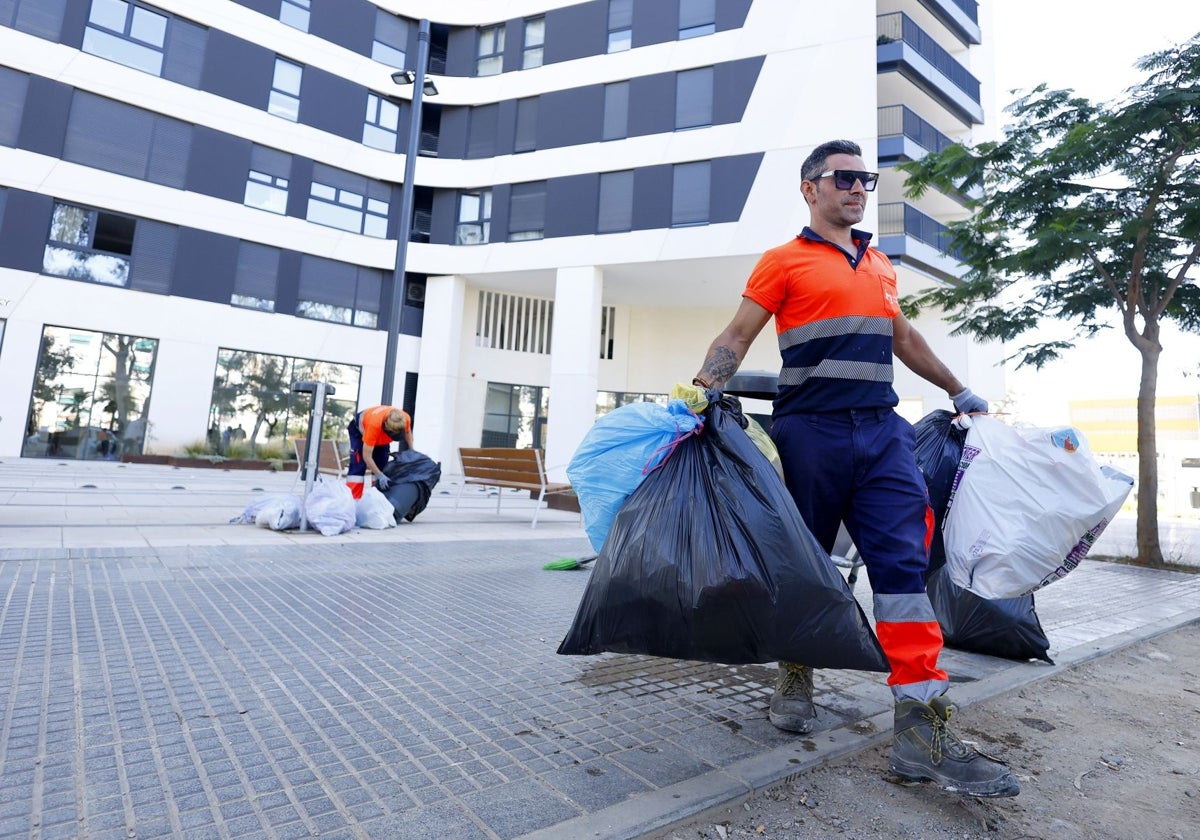A concentration of tourist apartments makes city rents more expensive, latest study shows
The University of Malaga corroborates this hypothesis and concludes that rental prices increase by 3.29 euros per square metre for every 10% increase in the number of holiday rentals in the area
The effect of tourist housing on rental prices has been corroborated in a study undertaken by the University of Malaga (UMA) and led by lecturer Manuel Moreno Linde, whose findings were presented on Wednesday this week at a conference organised at the Faculty of Law.
After a detailed analysis of the data, based on appropriate scientific methodologies, the study report concludes that there is "a relationship between tourist housing and its growth with the rise in the price of rented housing", and the report even goes so far as to quantify it.
So, to the numbers: the report states that rental prices do increase by an average of 3.29 euros per square metre every time the number of tourist lets grows by 10% in a given location or area.
This study was carried out by researchers from several institutions: the UMA's Andalusian Institute for Research and Innovation in Tourism, the University of Seville, the University of Granada, and with some collaboration from another research institute at the UMA with land law experts. This was a comparative analysis of data from 2016 onwards on the cities of Malaga and Seville on the one hand, and Jaen and Teruel on the other. The researchers were looking to see what happens in two provincial capitals with a high presence of tourist apartments and two others where holiday rentals have much less bearing and market presence.
In the case of Malaga the report shows an increase of 31% in rent prices if we compare a hypothetical scenario of no tourist housing in the city with one in which holiday rentals represent 10% of the residential stock. In the case of Seville the impact is a 33% increase.
Thus, for example, it shows up that, in the area of La Merced in the heart of the historic quarter of Malaga, "where the pressure of tourist housing reaches maximum levels in the city, the rental price has gone from 8.8 euros per square metre in 2016, with 5% of tourist flats, to 18 euros per square metre with almost 40% of holiday rentals in 2024."
The report adds: "As a contrast, in the northern sector of the city, where the two districts of Ciudad Jardín and Parque del Sur meet, the presence of tourist housing is almost non-existent (0 in 2016, 0.6% in 2023), with prices having remained almost unchanged (from 10.4 euros per square metre in 2016 to 11.4 per square metre in 2023."
Impact on residents' wallets
The study also analyses how the price increases in rents derived from the concentration of tourist flats have an impact on the pockets of local residents (or even would-be residents). Thus, looking at the typical case of a 70 square-metre home in 2023, the researchers conclude that the situation "is worrying" for the circumstances as they stand in Malaga and Seville, where the rental price of a flat of this size increases by between 16% and 33%, depending on whether holiday rentals in the area account for up to 5% of the residential stock or up to 10% respectively.
"This fact increases social protest given that, in all scenarios, some 60% of the average net income per person is exceeded" to cover paying the rent alone.
"In 2024 we can affirm that there is a significant spatial correlation between the price of renting and the concentration of tourist housing in Malaga," states the report.
The research team carried out this whole series of analyses with scientific models that allowed them to produce maps showing the correlation between high rental prices and the concentration of tourist housing in sectors that show up in a deep red colour. on the maps This colour "has been spreading from the heart of the city centre and the eastern sector, expanding like an oil slick between 2016 and 2023," says the report. This 'red stain' has grown in recent years across the centre and in the residential areas of Pedregalejo and El Palo closest to the beaches.
The study concludes that "54% of the variations in the price of rent can be explained by the concentration of housing for tourist use." However, it stresses that this influence is "one more component of a phenomenon that needs regulation mechanisms in the short term to guarantee access to decent housing solutions." The study admits that "the main responsibility" for this regulation has largely fallen to the municipal councils in the region of Andalucía. They at least have the power to place limits and restrictions on tourist housing in the most saturated areas, something that Malaga city council approved in last week's full council meeting.
"That housing is a market-sensitive commodity is a logical reality within the liberal economic system in which we operate; its exclusive consideration as such, at the expense of everything else, is a questionable choice that is beginning to be contested by society", concludes the study report, whose authors are Enrique Navarro Jurado, Pablo Armario Pérez and Mario Blanco Vílchez.

